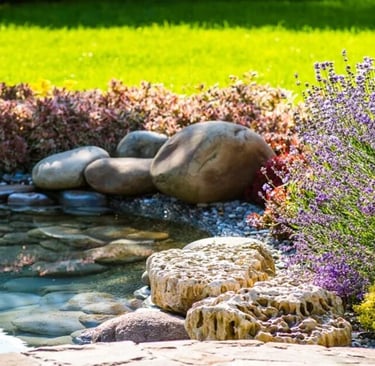Transform Your Space: Eco-Friendly Landscape Designs for a Healthier Home and Planet
Explore eco-friendly landscape designs that enhance your home's beauty while supporting a healthier planet. Get tips on sustainable choices for lasting impact.


Introduction to Eco-Friendly Landscape Designs
In today's world, an increasing number of homeowners are recognizing the importance of creating eco-friendly landscapes that foster a healthy home environment and contribute positively to the planet. By incorporating sustainable practices in landscape design, individuals can enhance their outdoor spaces while minimizing their ecological footprint. This blog explores various components of eco-friendly landscaping, including no-mow lawns, green fences, native plants, and the benefits of creating backyard composts.
The Benefits of No-Mow Lawns
No-mow lawns are an innovative approach to traditional turf grass that can drastically reduce maintenance costs and resource consumption. These lawns typically consist of hardy, low-growing native grasses and flowering species that require little to no mowing, watering, or chemical fertilizers. By opting for no-mow lawns, homeowners can significantly decrease their reliance on fossil fuels and contribute to biodiversity by attracting beneficial insects and pollinators. As a result, no-mow lawns promote a healthier ecosystem while providing a clean, natural aesthetic that enhances the beauty of any property.
Integrating Green Fences in Your Landscape
Green fences, also known as living fences, offer an excellent alternative to traditional fencing materials. Comprising of shrubs, trees, and climbing plants, green fences provide privacy and security while fostering a welcoming habitat for wildlife. In addition to acting as a natural barrier, green fences can effectively filter air pollutants, reduce noise pollution, and create microclimates that support various plant species. By choosing native plants to construct these fences, homeowners can also contribute to local biodiversity and ensure that their landscapes thrive in harmony with the natural environment.
Embracing Native Plants for a Sustainable Garden
Utilizing native plants is a cornerstone of eco-friendly landscape designs. These plants are adapted to local climatic conditions and soil types, making them more resilient and energy-efficient compared to non-native varieties. By incorporating native plants into your garden, you reduce the need for chemical pesticides, fertilizers, and excessive watering. Furthermore, native plants attract local wildlife, such as birds and butterflies, enhancing the biodiversity of your landscape while maintaining a natural, picturesque charm. Investing in native plant species cultivates a sustainable garden that supports both the environment and the well-being of your community.
Creating Back Yard Composts
One of the most impactful ways to promote an eco-friendly landscape is through backyard composting. Composting not only reduces food waste but also enriches the soil, providing essential nutrients for plants while minimizing the need for synthetic fertilizers. Establishing a compost bin is a simple and effective practice that can transform your kitchen scraps and yard waste into valuable compost material. By incorporating compost into your garden, you are creating a sustainable cycle that supports healthy plant growth, contributes to soil health, and reduces greenhouse gas emissions. This practice reinforces the interplay between effective landscaping and environmental stewardship.
Conclusion
Embracing eco-friendly landscape designs is essential for promoting a healthy home and planet. From adopting no-mow lawns and green fences to integrating native plants and implementing backyard composting, each element plays a critical role in ensuring our landscapes are sustainable and vibrant. By making informed choices in our landscape designs, we not only enhance our outdoor spaces but also contribute positively to the environment for generations to come.
